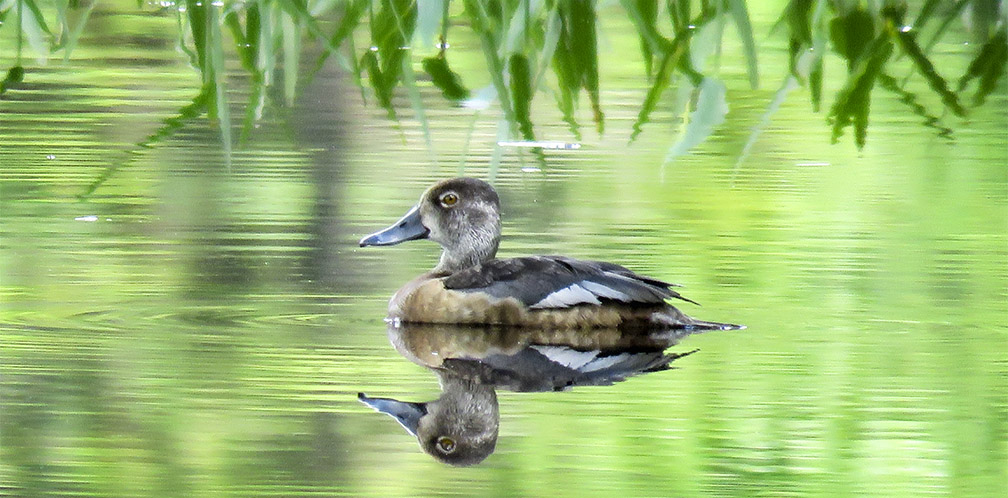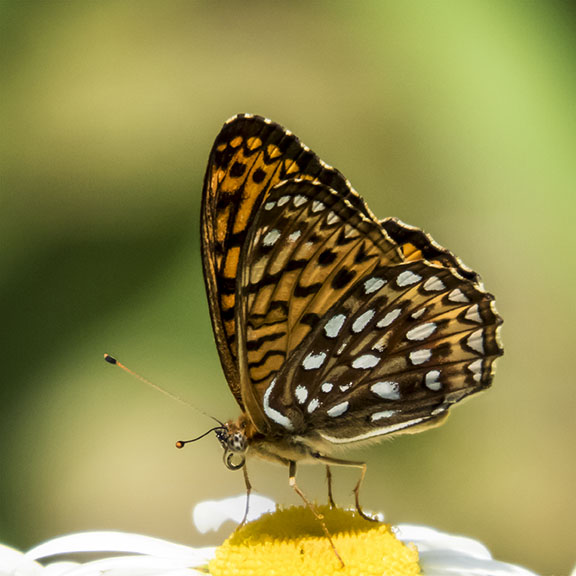Adirondack Nature Trails
Paul Smith's College VIC Trails

The 3,000-acre Paul Smith's College VIC (Visitor Interpretive Center) offers trails traversing every habitat type found in the Adirondack Park with the exception of alpine vegetation. The property includes a 60-acre marsh, five ponds, several brooks, swamps, bogs, fens, and varied forest types, including mixed woods and northern hardwood forest. The site includes significant glacial and geological features and provides striking scenic vistas of Saint Regis Mountain and Jenkins Mountain.
The Paul Smith’s College VIC opened in 1989 as a state-funded facility – one of two centers created by New York State so local residents and visitors would get to know the natural ecosystems of the six-million acre Adirondack Park. In 2011, after New York State curtailed funding to both visitor centers, Paul Smith’s College (which owns the land on which the VIC building is located) agreed to take over the Paul Smiths VIC and has been managing it ever since, expanding the trail system and continuing many of the nature programs popular under state management.
Trail System
The VIC property has over 25 miles of trails, including six miles of interpretive trails.
- The interpretive trails are surfaced for easy access and feature signs explaining the local ecology.
- The trails are free and open to the public for spring, summer, and fall use. Use of the trails during these months is free. During the winter months, the VIC trails are open and groomed daily for cross-country skiing and snowshoeing; winter trail users purchase a day or seasonal pass.
- Trail hours are open from dawn to dusk, every day.
The trail system traverses a variety of habitats, offering extensive opportunities to learn about and experience nature in the Adirondack Mountains:
Several of the trails feature wetland ecosystems. The one mile Boreal Life Trail, for example, features an extensive boardwalk through a northern bog. Trail users have opportunities to see a variety of boreal birds who favor this habitat. In addition, this trail features an impressive display of native orchids during early July: Grass Pink, Rose Pogonia, and hundreds of White Fringed Orchids.
A wide variety of birds make the VIC their seasonal or year-round home, making the VIC a bird watching haven which has attracted birders from throughout upstate New York and the northeast. The VIC trails also attract nature lovers who are interested in wildflowers, trees, mushrooms, butterflies, moths, ferns, and mosses.
Native Species Butterfly House

A key attraction at the VIC during the summer months is the Breck Chapin Memorial Native Species Butterfly House, featuring butterflies and moths in all stages of development.
- Visitors can view native butterflies up close and learn about their life stages and migratory patterns.
- Butterfly House volunteers are available to point out the species of butterflies in the house that day, provide information on the insect's life cycle, and identify specific plants that are favored by each species.
- Inside the Butterfly House, there are nectar plants for food and host plants for egg-laying and caterpillar feeding. There are also touch boxes and information handouts on butterflies and moths.
- Outside the Butterfly House is the Frank Hutchins Butterfly Garden, a garden designed to attract butterflies and named to honor the late Frank Hutchins, a longtime supporter of the VIC.
The Butterfly House is usually open seven days a week (weather permitting) throughout the summer, from mid-June to the end of August. Admission is free.
Naturalist Programs
The VIC also offers a wide variety of free and fee-based naturalist programs throughout the year.
- During the winter months, VIC naturalists lead naturalist snowshoe walks on the weekends. There are also winter owl prowls, as well as primitive skills workshops offering information on orienteering and safety in the winter wilderness.
- In the summer, the VIC offers a more extensive series of naturalist-led walks, wildflower workshops, mushroom walks, wild edible walks, and guided bird walks.
- The VIC also hosts the annual Great Adirondack Birding Celebration on the first weekend in June, the Science, Art Music Festival (SAM Fest) in late April, and the ADK Fungi Fest and Adirondack Rural Skills and Homesteading Festival in September or October.
